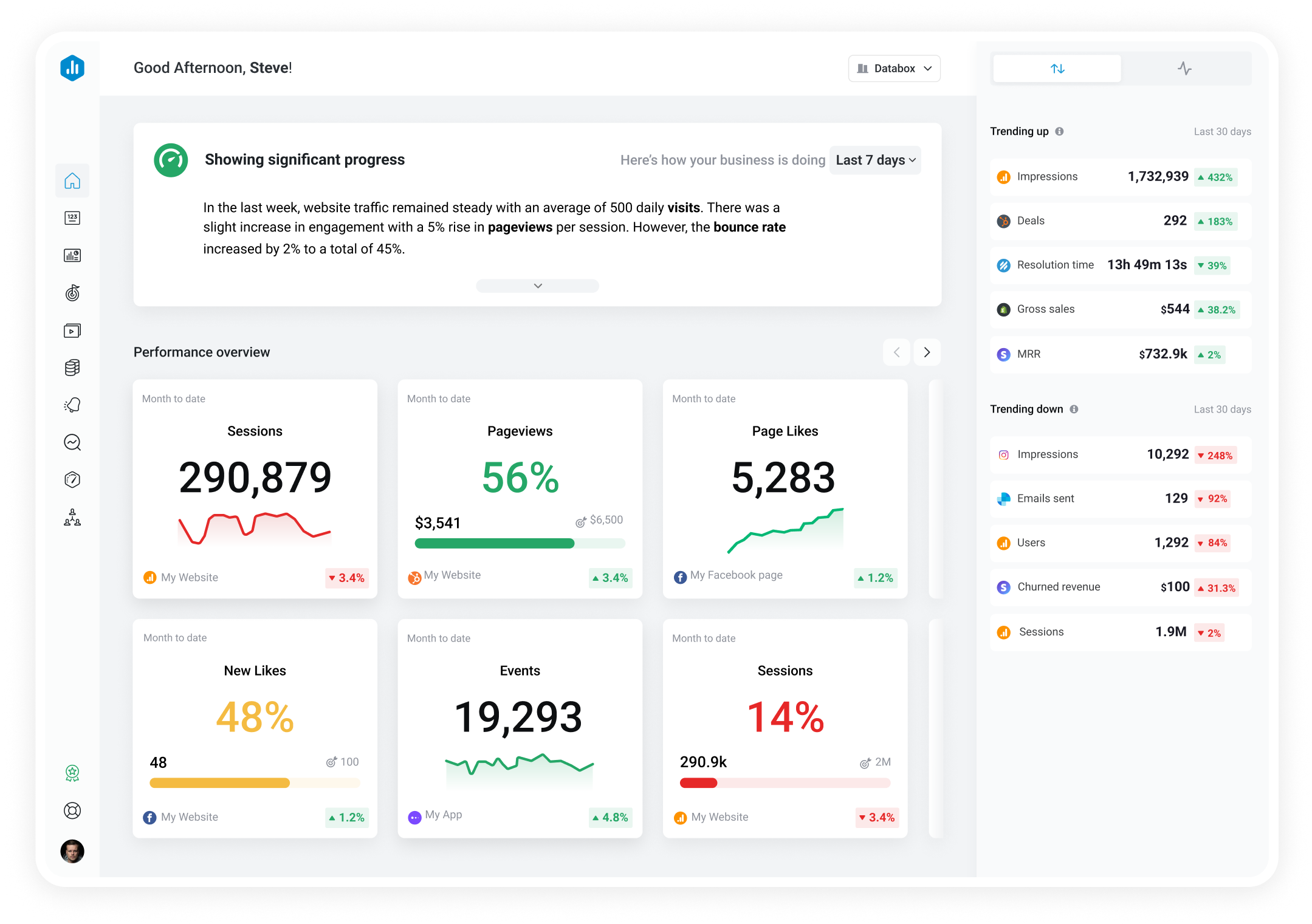Track all of your key business metrics from one screen
GET STARTED
 QuickBooks
Cost of Goods Sold (Cash) by Category
QuickBooks
Cost of Goods Sold (Cash) by Category The Cost of Goods Sold (Cash) by Category metric measures the amount of money spent on raw materials and production costs related to each category of goods sold, providing insight into profitability and spending patterns.
With Databox you can track all your metrics from various data sources in one place.

Used to show comparisons between values.
Databox is a business analytics software that allows you to track and visualize your most important metrics from any data source in one centralized platform.
To track Cost of Goods Sold (Cash) by Category using Databox, follow these steps:
 Goals
Goals Scorecards
Scorecards Metric Digest
Metric Digest Metric Builder
Metric Builder Data Calculations
Data Calculations Performance Screen
Performance Screen